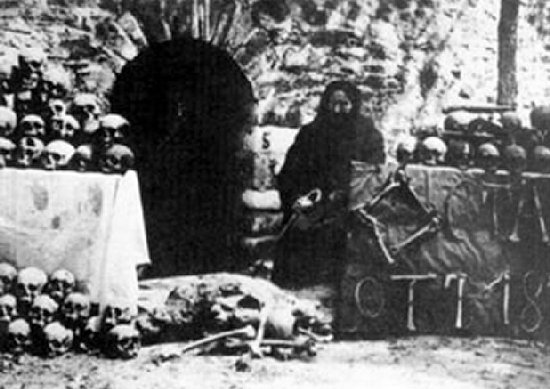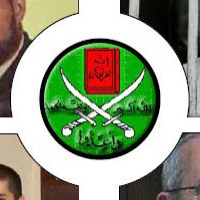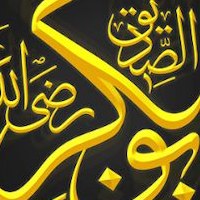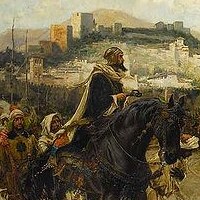May 15, 2009 | The Bronx Times | By Peter Milosheff
The Turkish Atrocities In Bulgaria
The Batak massacre:[1] more than 5,000 of the 7,000 inhabitants of the Bulgarian town of Batak, including women and children, were raped, slaughtered, beheaded or burned alive by Ottoman irregulars who left piles of dead bodies around the town square and church in 1876, giving start of the April Uprising.
American journalist and war correspondent working for the New York Herald and the London Daily News, Januarius McGahan, who first described the Turkish atrocities in Bulgaria, gives eye-witness account of the aftermath some two months following the events. His complete work can be read here. Amazingly, Turkish history, as taught in schools today, fails to mention a word on the 500 years of genocide and systematic rape and torture of the Bulgarian people and my Turkish peers are quite ignorant of the facts and the history their forefathers wrote in innocent blood.
Januarius McGahan writes:
“I think people in England and Europe generally have a very imperfect idea of what these Bulgarians are. I have always heard them spoken of as mere savages, who were in reality not much more civilized than the American Indians; and I confess that I myself was not far from entertaining the same opinion not very long ago. I was astonished, as I believe most of my readers will be, to learn that there is scarcely a Bulgarian village without its school; that these schools are, where they have not been burnt by the Turks, in a very flourishing condition; that they are supported by a voluntary tax levied by the Bulgarians on themselves, not only without being forced to do it by the Government, but in spite of all sorts of obstacles thrown in their way by the perversity of the Turkish authorities ; that the instruction given in these schools is gratuitous, and that all profit alike by it, poor as well as rich ; that there is scarcely a Bulgarian child that cannot read and write ; and, finally, that the percentage of people who can read and write is as great in Bulgaria as in England and France. Do the people who speak of the Bulgarians as savages happen to be aware of these facts?”
“On the other side of the way were the skeletons of two children lying side by side, partly covered with stones, and with frightful sabre cuts in their little skulls. The number of children killed in these massacres is something enormous. They were often spitted on bayonets, and we have several stories from eye-witnesses who saw little babes carried about the streets, both here and at Otluk-kui, on the point of bayonets. The reason is simple. When a Mahometan has killed a certain number of infidels, he is sure of Paradise, no matter what his sins may be. Mahomet probably intended that only armed men should count, but the ordinary Mussulman takes the precept in broader acceptation, and counts women and children as well. Here in Batak the Bashi-Bazouks, in order to swell the count, ripped open pregnant women, and killed the unborn infants. As we approached the middle of the town, bones, skeletons, and skulls became more numerous. There was not a house beneath the ruins of which we did not perceive human remains, and the street besides was strewn with them. Before many of the doorways women were walking up and down wailing their funeral chant. One of them caught me by the arm and led me inside of the walls, and there in one corner, half covered with stones and mortar, were the remains of another young girl, with her long hair flowing wildly about among the stones and dust. And the mother fairly shrieked with agony, and beat her head madly against the wall. I could only turn round and walk out sick at heart, leaving her alone with her skeleton. A few steps further on sat a woman on a doorstep, rocking herself to and fro, and uttering moans heartrending beyond anything I could have imagined. Her head was buried in her hands, while her fingers were unconsciously twisting and tearing her hair as she gazed into her lap, where lay three little skulls with the hair still clinging to them. How did the mother come to be saved, while the children were slaughtered ? Who knows ? Perhaps she was away from the village when the massacre occurred. Perhaps she had escaped with a babe in her arms, leaving these to be saved by the father; or perhaps, most fearful, most pitiful of all, she had been so terror-stricken that she had abandoned the three poor little ones to their fate and saved her own life by flight. If this be so, no wonder she is tearing her hair in that terribly unconscious way as she gazes at the three little heads lying in her lap.”
“And now we begin to approach the church and the school- house. The ground is covered here with skeletons, to which are clinging articles of clothing and bits of putrid flesh; the air is heavy with a faint sickening odour, that grows stronger as we advance. It is beginning to be horrible. The school is on one side of the road, the church on the other. The schoolhouse, to, judge by the walls that are in part standing, was a fine large building, capable of accommodating two or three hundred children. Beneath the stones and rubbish that cover the floor to the height of several feet, are the bones and ashes of 200 women and children burnt alive between those four walls. Just beside the schoolhouse is a broad shallow pit. Here were buried a hundred bodies two weeks after the massacre. But the dogs uncovered them in part. The water flowed in, and now it lies there a horrid cesspool, with human remains floating about or lying half exposed in the mud. Near by, on the banks of the little stream that runs through the village, is a sawmill. The wheel-pit beneath is full of dead bodies floating in the water. The banks of this stream were at one time literally covered with corpses of men and women, young girls and children, that lay there festering in the sun, and eaten by dogs. But the pitiful sky rained down a torrent upon them, and the little stream swelled and rose up and carried the bodies away, and strewed them far down its grassy banks, through its narrow gorges and dark defiles beneath the thick underbrush and the shady woods -as far as Pestera, and even Tatar Bazardjik, forty miles distant. We entered the churchyard, but the odour here became so bad that it was almost impossible to proceed. We took a handful of tobacco, and held it to our noses while we continued our investigation.”[2]
“…We looked into the church which had been blackened by the burning of the woodwork, but not destroyed, nor even much injured. It was a low building with a low roof, supported by heavy irregular arches, that as we looked in seemed scarcely high enough for a tall man to stand under. What we saw there was too frightful for more than a hasty glance. An immense number of bodies had been partially burnt there and the charred and blackened remains seemed to fill it half way up to the low dark arches and make them lower and darker still, were lying in a state of putrefaction too frightful to look upon. I had never imagined anything so horrible. We all turned away sick and faint, and staggered out of the fearful pest house glad to get into the street again. We walked about the place and saw the same thing repeated over and over a hundred times. Skeletons of men with the clothing and flesh still hanging to and rotting together; skulls of women, with thehair dragging in the dust. bones of children and infants everywhere. Here they show us a house where twenty people were burned alive; there another where a dozen girls had taken refuge, and been slaughtered to the last one, as their bones amply testified. Everywhere horrors upon horrors…”[3]
Eugene Schuyler‘s report about the Batak massacre was published in the Daily News. He writes:
“…On every side were human bones, skulls, ribs, and even complete skeletons,heads of girls still adorned with braids of long hair, bones of children, skeletons still encased in clothing. Here was a house the floor of which was white with the ashes and charred bones of thirty persons burned alive there. Here was the spot where the village notable Trandafil was spitted on a pike and then roasted, and where he is now buried; there was a foul hole full of decomposing bodies; here a mill dam filled with swollen corpses; here the school house, where 200 women and children had taken refuge there were burned alive, and here the church and churchyard, where fully a thousand half-decayed forms were still to be seen, filling the enclosure in a heap several feet high, arms, feet, and heads protruding from the stones which had vainly been thrown there to hide them, and poisoning all the air. “Since my visit, by orders of the Mutessarif, the Kaimakam of Tatar Bazardjik was sent to Batak, with some lime to aid in the decomposition of the bodies, and to prevent a pestilence. “Ahmed Aga, who commanded at the massacre, has been decorated and promoted to the rank of Yuz-bashi…”[4]
The April Uprising (Bulgarian: Априлско въстание, Aprilsko vastanie) was an insurrection organised by the Bulgarians in the Ottoman Empire from April to May 1876, which indirectly resulted in the re-establishment of Bulgaria as an independent nation in 1878. The uprising was brutally crushed by the regular Ottoman Army and irregular bashi-bazouk units, leading to a public outcry in Europe and the United States, with many famous intellectuals condemning the Ottoman atrocities and supporting the oppressed Bulgarian population.
The 1876 uprising involved only those parts of the Ottoman territories populated predominantly by Bulgarians. The emergence of Bulgarian national sentiments was closely related to the re-establishment of the independent Bulgarian church in 1870. Together with notions of romantic nationalism the rise of national awareness became known as the Bulgarian National Revival.
Close to 100,000 were slaughtered in Bulgaria following the uprising, which attempted to put an end to the 500 years of Turkish slavery. Millions were killed in the course the darkest ages of Bulgarian history. Amazingly, the nation survived and managed to preserve its ethnic, cultural and Christian identity.
Background
In Europe, in the eighteenth century, the classic non-national states were the multi-ethnic empires such as the Ottoman Empire, ruled by a Sultan and the population belonged to many ethnic groups, which spoke many languages. The idea of nation state was an increasing emphasis during the 19th century, on the ethnic and racial origins of the nations. The most noticeable characteristic was the degree to which nation states use the state as an instrument of national unity, in economic, social and cultural life. By the 19th century, the Ottomans had fallen well behind the rest of Europe in science, technology, and industry. However the Bulgarian population was also suppressed socially and politically under Ottoman rule. Additionally, more immediate causes for the greater mobilisation compared to earlier revolts were the severe internal and external problems which the Ottoman Empire experienced in the middle of the 1870s. In 1875, taxes levied on non-Muslims were raised for fear of a state bankruptcy, which, in its turn, caused additional tension between Muslims and Christians and facilitated the breakout of the Herzegovinian rebellion and the Stara Zagora revolt in Bulgaria. The failure of the Ottomans to handle the Herzegovinian uprising successfully showed the weakness of the Ottoman state while the brutalities which ensued, discredited additionally the empire to the outside world. In the late 19th century European ideas of nationalism were adopted by the Bulgarian elite.
Preparation
In November 1875, activists of the Bulgarian Revolutionary Central Committee met in the Romanian town of Giurgiu and decided that the political situation was suitable for a general uprising. The uprising was scheduled for April or May 1876. The territory of the country was divided into five revolutionary districts with centers in Vratsa, Veliko Tarnovo, Sliven, Plovdiv and Sofia. The rebels had been hording arms and ammunition for some time and even constructed make-shift cannon out of cherry-wood.
In the progress of the preparation of the uprising, the organisers gave up the idea of a fifth revolutionary district in Sofia due to the deplorable situation of the local revolutionary committees and moved the centre of the fourth revolutionary district from Plovdiv to Panagyurishte. On 14 April 1876, a general meeting of the committees from the fourth revolutionary district was held in the Oborishte locality near Panagyurishte to discuss the proclamation of the insurrection. One of the delegates, however, disclosed the plot to the Ottoman authorities. On 2 May [O.S. 20 April] 1876, Ottoman police made an attempt to arrest the leader of the local revolutionary committee in Koprivshtitsa, Todor Kableshkov.
Outbreak and suppression
In conformity with the decisions taken at Oborishte, the local committee attacked the headquarters of the Ottoman police in the town and proclaimed the insurrection two weeks in advance. Within several days, the rebellion spread to the whole Sredna Gora and to a number of towns and villages in the northwestern Rhodopes. The insurrection broke out in the other revolutionary districts, as well, though on a much smaller scale. The areas of Gabrovo, Tryavna, and Pavlikeni also revolted in force, as well as several villages north and south of Sliven and near Berovo (in the present-day Republic of Macedonia). The reaction of the Ottoman authorities was quick and ruthless. Detachments of regular and irregular Ottoman troops (bashi-bazouks) were mobilised and attacked the first insurgent towns as early as 25 April. Massacres of civilian populations were committed, the principal places being Panagurishte, Perushtitza, Bratzigovo and Batak. By the middle of May, the insurrection was completely suppressed; one of the last sparks of resistance was poet Hristo Botev’s attempt to come to the rebels’ rescue with a detachment of Bulgarian political emigrees resident in Romania, ending with the unit’s rout (and Botev’s death).
The most detailed contemporaneous account was that of Schuyler. After visiting some of the of the sites, Eugene Schuyler published a report detailing the atrocities. He reported that fifty-eight villages had been destroyed, five monasteries demolished, and fifteen thousand people massacred.
As few records were kept at the time, it is impossible to know exactly how many people were killed. The figure ranges from 15,000 to tens of thousands more.
Reaction in Europe and the United States
News of massacres of Bulgarians reached Istanbul in May and June 1876 through Bulgarian students at Robert College, the American college in the city. Faculty members at Robert College wrote to the British Ambassador and to the Istanbul correspondents of The Times and the London Daily News.
An article about the massacres in the Daily News on June 23 provoked a question in Parliament about Britain’s support for Turkey, and demands for an investigation. Prime Minister Benjamin Disraeli promised to conduct an investigation about what had really happened.
In July, the British Embassy in Istanbul sent a second secretary, Walter Baring, to Bulgaria to investigate the stories of atrocities. Baring did not speak Bulgarian (although he did speak Turkish) and British policy was officially pro-Turkish, so the Bulgarian community in Istanbul feared he would not report the complete story. They asked the American Consul in Istanbul, Eugene Schuyler, to conduct his own investigation.
Schuyler set off for Bulgaria on July 23, four days after Baring. He was accompanied by a well-known American war correspondent, Januarius MacGahan, by a German correspondent, and by a Russian diplomat, Prince Aleksei Tseretelev.
Schuyler’s group spent three weeks visiting Batak and other villages where massacres had taken place. Schuyler’s official report, published in November 1876, said that fifty-eight villages in Bulgaria had been destroyed, five monasteries demolished, and fifteen thousand people in all massacred. The report was reprinted as a booklet and widely circulated in Europe.
Baring’s report to the British government about the massacres was similar, but put the number of victims at about twelve thousand.
No other investigation of the massacres was made. A century later, one historian claimed that the number killed was exaggerated, and was closer to three thousand. But it is difficult to ignore the accounts of MacGahan, Schuyler and Baring, who visited the massacre sites three months after they occurred, and saw many of the unburied corpses. The actual number of victims will never be known.
MacGahan’s vivid articles from Bulgaria moved British public opinion against Turkey. He described in particular what he had seen in the town of Batak, where five thousand of a total of seven thousand residents had been slaughtered, beheaded or burned alive by Turkish irregulars, and their bodies left in piles around the town square and the church. He described
“Skulls with gray hair still attached to them, dark tresses which had once adorned the heads of maidens, the mutilated trunks of men, the rotting limbs of children…”
The political impact of the reports was immediate and dramatic. The leader of the British opposition, William Gladstone, wrote a booklet denouncing what he called “the Bulgarian Horrors,” and calling upon Britain to withdraw its support for Turkey.
“I entreat my countrymen,” he wrote, “upon whom far more than upon any other people in Europe it depends, to require and to insist that our government, which has been working in one direction, shall work in the other, and shall apply all its vigour to concur with the states of Europe in obtaining the extinction of the Turkish executive power in Bulgaria. Let the Turks now carry away their abuses in the only possible manner, namely, by carrying off themselves….”
Prominent Europeans, including Charles Darwin, Oscar Wilde, Victor Hugo and Giuseppe Garibaldi, spoke against the Turkish behavior in Bulgaria. When the war with Russia started in 1877, the Turkish Government asked Britain for help, but the British government refused, citing public outrage caused by the Bulgarian massacres as the reason.
The April uprising was a tragic failure as a revolution, but, thanks to publicity that was given to the reprisals that followed, it led directly to European demands for reform of the Ottoman Empire, and the Russo-Turkish War, 1877-78, which ended in Turkish defeat, and the signing of the Treaty of San Stefano in March 1878, followed in July that year by the Treaty of Berlin. It thus ultimately achieved its original purpose, the liberation of Bulgaria from the Ottoman Empire.
Note:
[1] Batak massacre refers to the massacre of Bulgarians in Batak by Ottoman troops in 1876 at the beginning of the April Uprising. The number of victims ranges from 3,000 to 5,000, depending on the source.
[2] The Turkish atrocities in Bulgaria, letters. With mr. Schuyler’s preliminary report.
[3] The Turkish Atrocities in Bulgaria: Horrible Scenes at Batak; [J. A. MacGahan (The Daily News, August 22, 1876), pp.5-6].
[4] Mr. Schuyler’s Report pg. 93.



 RSS
RSS











The Turkish Atrocities In Bulgaria #ottoman #empire #turkey #bulgaria #islam http://j.mp/aVp7VJ
RT @CrethiPlethi: The Turkish Atrocities In Bulgaria #ottoman #empire #turkey #bulgaria #islam http://j.mp/aVp7VJ
RT @RantsbyRemnant: RT @CrethiPlethi: The Turkish Atrocities In Bulgaria #ottoman #empire #turkey #bulgaria #islam http://j.mp/aVp7VJ
RT @CrethiPlethi: The Turkish Atrocities In Bulgaria #ottoman #empire #turkey #bulgaria #islam http://j.mp/aVp7VJ
RT @CrethiPlethi: The Turkish Atrocities In Bulgaria #ottoman #empire #turkey #bulgaria #islam http://j.mp/aVp7VJ
See the oustanding documentation AGHET made by Eric Friedler about the truth of the Armenian Genocide, with many proofs, long time hidden in order not to harm Turkey. The documentation was shown twice on two notable German TV stations in April this year and will be shown again in September. This is a very great sign as it’s a German production although it depicts the complicity of Germany (= Turkey’s Ally) in the Armenian Genocide.
PLEASE TAKE SOME TIME, WATCH IT AND SPREAD THE LINK.
––––––––––––––––––––––––––––––––––––––––––––––––––
http://www.youtube.com/view_play_list?p=B4306054D5680A18
––––––––––––––––––––––––––––––––––––––––––––––––––
THANK YOU.